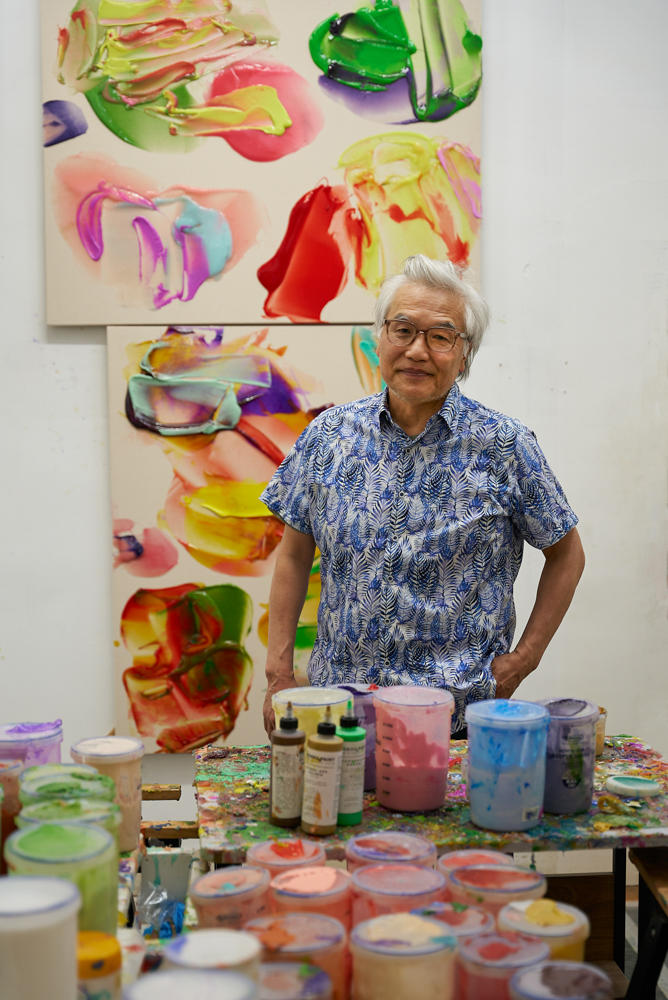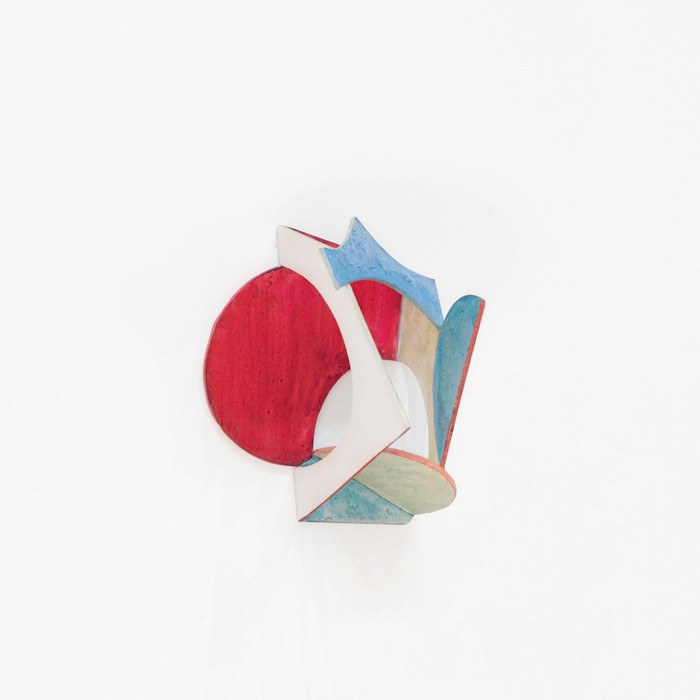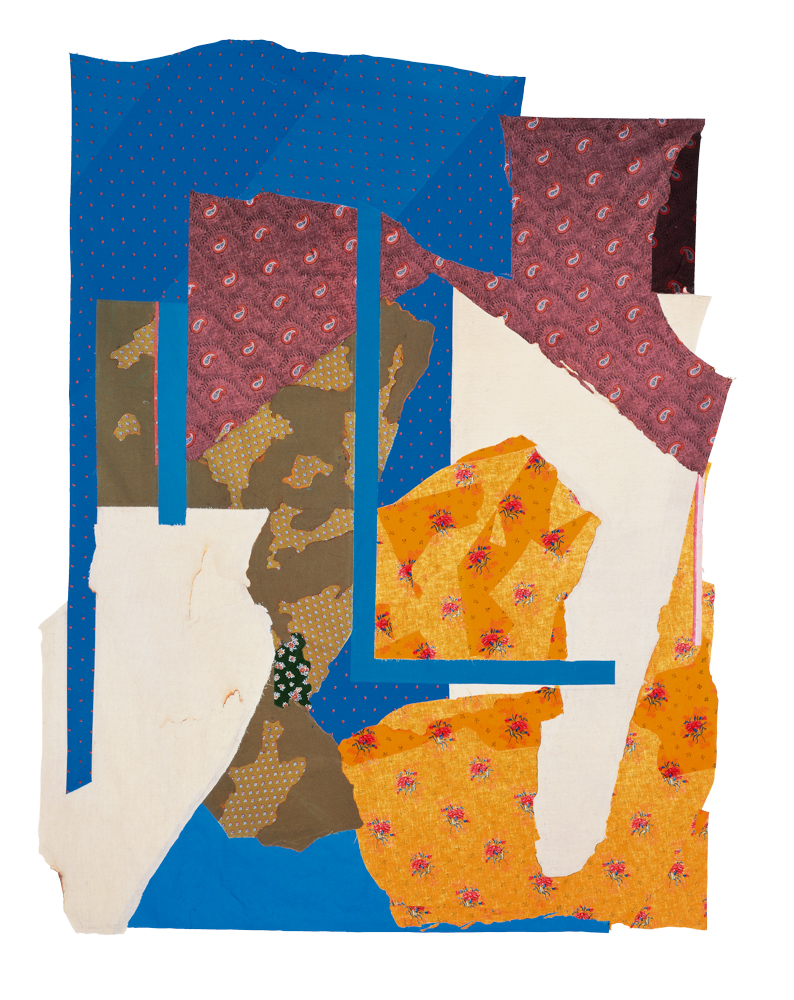KENJIRO OKAZAKI: TIME UNFOLDING HERE
HAPPENINGText: Alma Reyes
Plastic arts (“zokei geijutsu”) in the Japanese context refers to visual arts that involve shaping and molding into different forms. Genres cover sculpture, ceramics, and painting wherein the paint’s material capability generates varied contours or textures on a surface.
One of the most recognized practitioners of plastic arts in Japan is visual artist Kenjiro Okazaki (1955-). Highly skilled in mixed media encompassing painting, sculpture, architecture, robotic design and illustration of children’s books, Okazaki is also acclaimed as a critic on culture and environmental discourse, and as a well-known author. He hailed from Tama Art University and Tokyo University of the Arts Graduate School where he specialized in Intermedia Art. He earned another master’s degree in Fine Arts at the University of the Arts London, Chelsea College of Art and Design. Okazaki is immensely praised for his directorship of the Japanese Pavilion at the 8th International Architecture Exhibition in Venice Biennale 2002. Additionally, he has presented his works at the Guggenheim Museum in New York, San Francisco Museum of Modern Art, and the S.M.A.K. Municipal Museum of Contemporary Art, Ghent, Belgium, among others.

Portrait of Kenjiro Okazaki, Photo: Risaku Suzuki
As the artist’s first large-scale retrospective in Tokyo, “Kenjiro Okazaki: Time Unfolding Here” is being shown at the Museum of Contemporary Art Tokyo until July 21st this year. About a hundred recent works created from 2021 and earlier prominent achievements are highlighted.
The title “Time Unfolding Here” was extracted from a quotation in the Analects of Confucius, a collection of Confucius’ thoughts delineating the philosophy of moral code. Through this path, Okazaki interprets through art the mode of existence in time that transcends human experience. He discovered that his mental time-space framework had undergone a pivotal turn in response to radical changes in society and his personal encounters, particularly amid and after the COVID-19 pandemic. He found himself severely disjointed with the rest of the world, and his sense of time from past to future appallingly distorted. Consequently, he realized the urgent need to reconnect his body and mental consciousness through art expression by restoring plasticity. For Okazaki, plastic arts has become the force that curbs the structure for transforming our perception of the world—the tool to demonstrate its malleability in bringing about rebirth and recreation as manifested in this exhibition.

Kenjiro Okazaki, Akasakamitsuke, 1981, Takamatsu City Museum of Art, Photo: Shu Nakagawa
In the first section focused on works before 2020, we witness masterpieces in painting, sculpture, architecture and other projects culminating the artist’s early career. The introductory room displays the famous “Akasakamitsuke” series (extended in a larger hall) covering “Kozukue” and “Tatemono no Kimochi (building through construction),” three-dimensional reliefs in polyethylene, comprised of differently shaped and colored panels resembling tulips that have been cut out from a flat surface and attached to the wall. Curves connect varied dimensions of flat and vertical wall surfaces, and enclosed and external spaces, which extend into the wall. The series was first presented at Okazaki’s first solo exhibition at Muramatsu Gallery, Tokyo in March 1981, and was selected for the 12th Paris Biennale in 1982, forging him as a promising artist.

Kenjiro Okazaki
, Early Now, But Will Be Late, 1986, Ohara Museum of Art, Ohara Art Foundation, Kurashiki
Another crucial stepping stone from the previous years was the “Katagami no Katachi (The Shape of a Pattern)” series developed in 1979, involving shapes formed from clothing patterns, then patched together on large cotton fabrics. Okazaki incorporated the “Yosegire” technique of printed fabric patchwork, and was inspired by the Chinese method of arranging separated rocks in digital-like folds flattened on two-dimensional surfaces to create new, variable spaces. The cloth patterns, as exemplified in “Early Now, But Will Be Late” (1986), have been chosen delicately, combined with a range of multicolored repeated motifs, and laid out in angular or random shapes. This concept of constructing compositions by assembling fabric scraps is also applied to the artist’s paintings, where thick brushstrokes appear to be folded and unfolded, or enlarged and shrunk, giving birth to patches of novel hues and forms that swim across canvasses.
The process in Yosegire is also visible in “Hand painted ceramic tile,” two huge tile boards from 2011 and 2013. The artist personally adjusted and applied pigments unit by unit without premeditated vision of the resulting color until after the tiles were fired. The 2011 work in dark grey, blue, green and yellow depicts vertically and horizontally rushing water, while the 2013 work in clear blue and white speaks of living things that simply float on heavenly water.
Read more ...





